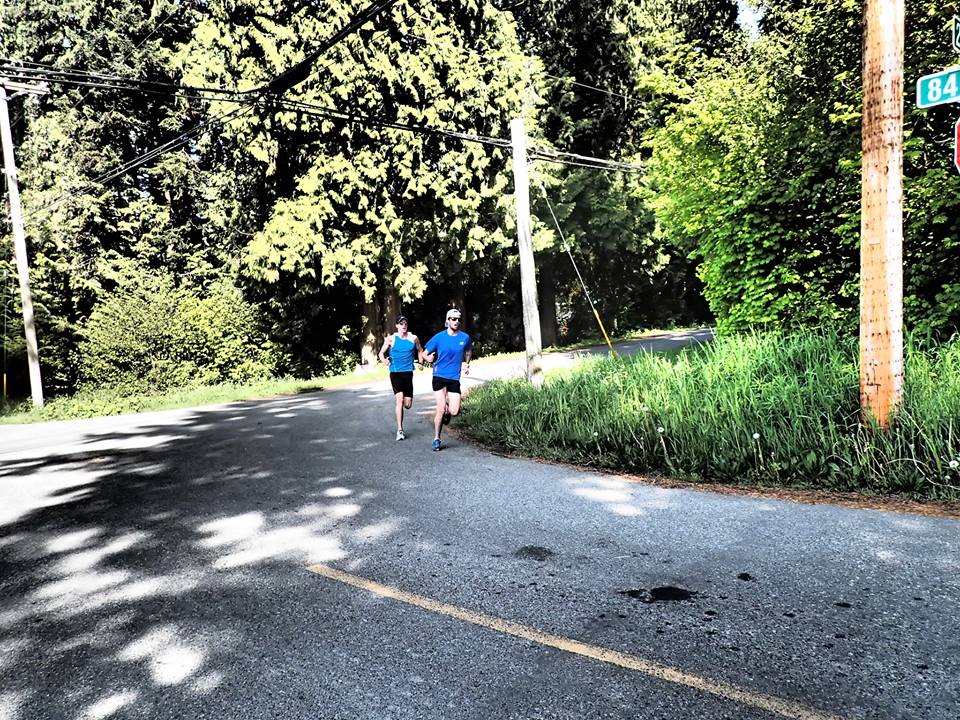Summer speed work suggestions from M2M’s Dylan Wykes and Rob Watson
Training through the heat and humidity of summer can be tough. Mile2Marathon coaches Dylan Wykes and Rob Watson offer two workout suggestions to beat the heat


By Dylan Wykes and Rob Watson
Everyone knows that Canadian winters can be brutal. It is practically a point of pride to lace up the shoes and bust out a workout in the frigid cold. And as coaches we don’t often hear a lot of complaints from athletes in the winter; the cold and snow is just something that our northern blood accepts.
RELATED: In a rut? 14 sizzling suggestions to make summer running fun again
The summer, however, is a different story. We find that our athletes complain much more about training in the heat and humidity of summer. Training in the heat is a struggle for most runners and much like running in the dead of winter, it is best to be efficient with your training. After all, you don’t want to be out there for much longer than you need to be.
Enter cruise tempos and fartlek runs as two great workout options for summer training. These sessions are ideal for summer because they are continuous efforts, meaning you won’t spend a lot of time standing around between efforts baking in the sun. At the same time, the intervals are not so long that you overexert yourself and overheat. Most importantly though is that these are effort-based workouts. Heat will have a dramatic effect on pace and if you are too focused on trying to hit a prescribed pace on a hot, steamy day then not only is it demoralizing, it can be dangerous. Running a four-minute kilometre at 10 degrees is a heck of a lot easier than one at 32 degrees!
RELATED: Make these pace-specific adjustments to cope with hot conditions
Cruise intervals
Cruise intervals are a great compromise for your standard tempo run, especially when temperatures start to rise. They are also an effective way to chip away at improving your lactate threshold and save yourself from going too deep into the well.
Cruise intervals are any hard effort that lasts 5 to 12 minutes long with short recoveries in between. The pace you want to run for cruise intervals is similar to your tempo run pace; that comfortably hard, on the verge of going into the red zone, effort. Because you are getting some rest between intervals, unlike a straight tempo run, you’re more likely to find that sweet spot of effort and less likely to overdo it. The recoveries are short but allow your heart rate to come down a little bit and give you some time to grab a drink of water or sports drink or dunk your head in the lake. As such, the total time spent running cruise intervals can be the same or slightly more–up to 15%–than a typical tempo run.
Here is one of our favourite cruise interval workouts that we give to Mile2Marathon athletes on a regular basis:
3-4 x 9 minutes with 60-90-seconds walk-jog between
This can replace your usual 30-40minute tempo run if you’re preparing for a half or full marathon. We like the 9-minute intervals because we’ve found it’s a manageable block of time and you can get some real lactate threshold development gains. After you’ve done this workout a few times, try breaking the 9 minutes into 3 x 3-minute segments where you increase the pace slightly at 3 and 6 minutes. This will keep you engaged mentally and physically.
Fun with fartleks
Along the same vein as the cruise interval, we also love fartlek runs. Giggle all you want at that silly word, we guarantee you won’t be laughing when you are stuck in the middle of a solid fartlek session. Fartleks are essentially intervals of fast efforts intermixed with recovery intervals done at a slower pace. One key rule is that there is no stopping during a fartlek; it is a continuous effort.
We prefer athletes to do fartlek workouts based on effort rather than a specific pace. It is an important but underrated skill for a runner to gain a sense of pace without being dependent on a watch.
While fartlek run can be structured many different ways, one of Mile2Marathon’s favourite sessions is to run 10 x 2-minutes on with 1-minute off. Start this session with the 2 minutes at half marathon effort and work down to 10K effort for the last few. Be sure to avoid going out too fast early on. If you run your first few too hard, you’ll be in a world of hurt come the final few.
Another way to do a fartlek is the old school way of just throwing surges into your run at random times. Sometimes we’ll just ask our athletes to accumulate a total of 20-minutes worth of fartlek at half-to-10K effort within a one hour run. It is up to them to decide when to go, for how long and how fast. It doesn’t really matter as long as they keep moving.
As always with summer running, make sure that you are always adequately hydrated and wear sunscreen. The heat is hard for everyone so try to focus on getting the work done at the right level of effort. Come the cooler temps of fall, we guarantee you’ll feel like a million bucks and be ready to crush your goals.


